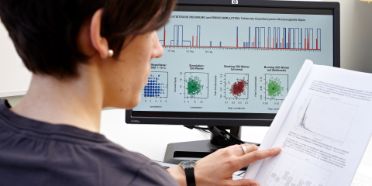- Press Release
Thorberg prison and BFH researchers collaborate on mobile phone localisation
31.05.2022 Thorberg correctional facility was recently equipped with a round-the-clock surveillance system that can determine the exact prison cell a mobile phone is located in. The system was developed by researchers at the Institute for Optimisation and Data Analysis IODA at Bern University of Applied Sciences BFH.
The illegal use of mobile phones is a major security risk for prisons. It allows prisoners to contact the outside world unsupervised and organise further crimes, conceal evidence, or even plan an escape. “We’re confident that the InPercept system will solve this problem,” project manager Armin Schmid, a research associate at BFH’s Institute for Optimisation and Data Analysis IODA, explains. “It allows us to automatically determine where a mobile phone is located in around the clock.” The researchers developed the prototype with several prisons. InPercept’s potential was also recognised by the management of Thorberg correctional facility. Some of its relevant infrastructure has been equipped with the system in the past year.
Localisation through electromagnetic fingerprints
The system locates mobile phones using electromagnetic signals that are captured by antennae installed around the building. These signals are continuously processed at a central unit and then evaluated. The electromagnetic topology of buildings means that the power of the signals received at each antenna varies depending on where the mobile phone is in the building. This means that any location in the building can be assigned a kind of “electromagnetic fingerprint”. The fingerprints of various locations in the building, including the individual prison cells, are recorded during a one-off “learning phase” that allows the localisation algorithm to learn the building’s specific topology. In subsequent normal operations, the illegal use of a mobile phone is localised by comparing the continuously received fingerprints with the previously recorded reference fingerprints. “In 90% of measurements the localisation was off by a maximum of one room. 70% of measurements were already within the correct room,” Schmidt explains. “And we can achieve these figures using only a small number of sensors.” In Thorberg, for example, only 16 antennae cover the relevant buildings of the institution. This makes InPercept comparatively cheap.
Further target markets for InPercept
But the system’s potential isn’t limited to use in prisons, Schmidt explains: “Sensitive federal buildings such as server centres or intelligence service buildings could be equipped with InPercept, as could research facilities that require protection from industrial espionage. It could also be used in high-risk factory areas to locate and evacuate staff as quickly as possible in an emergency.”
